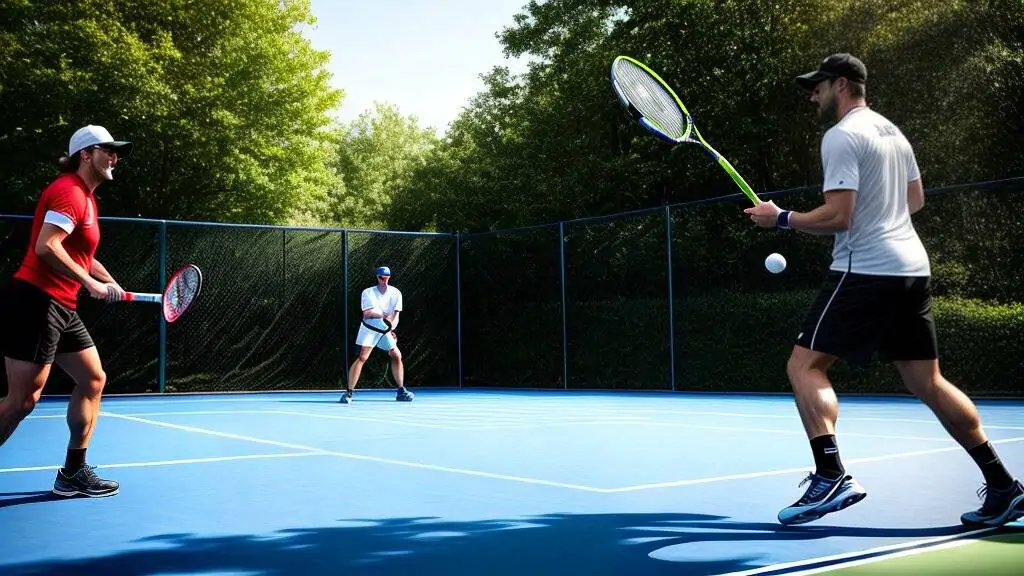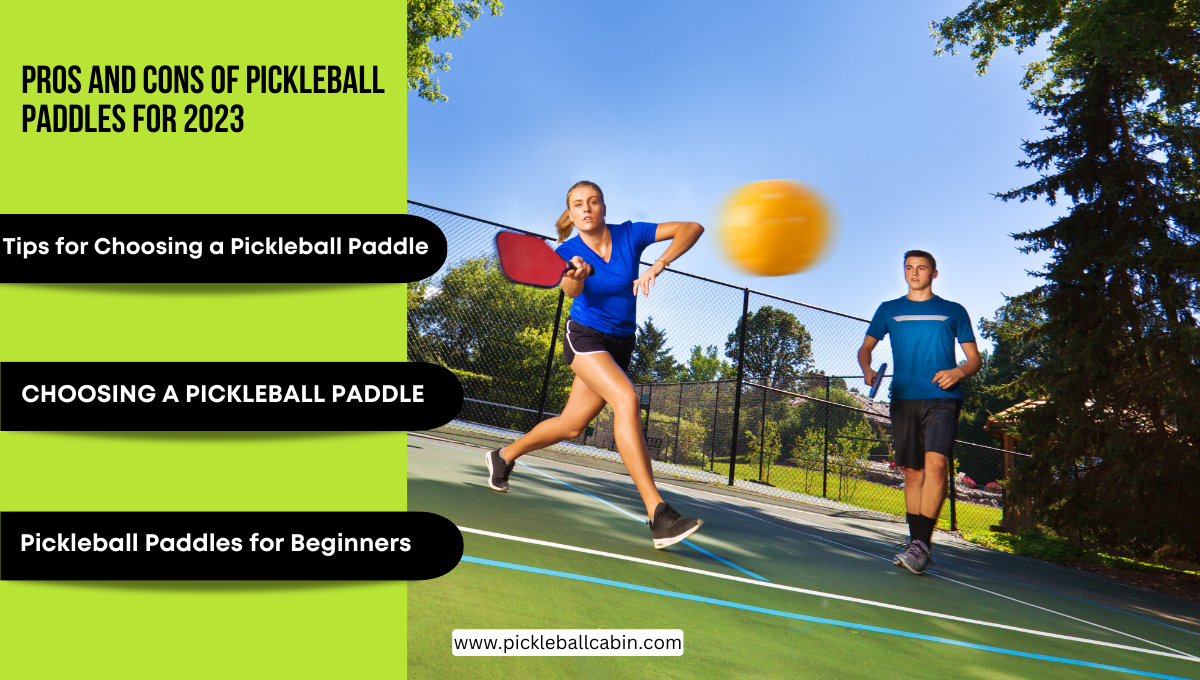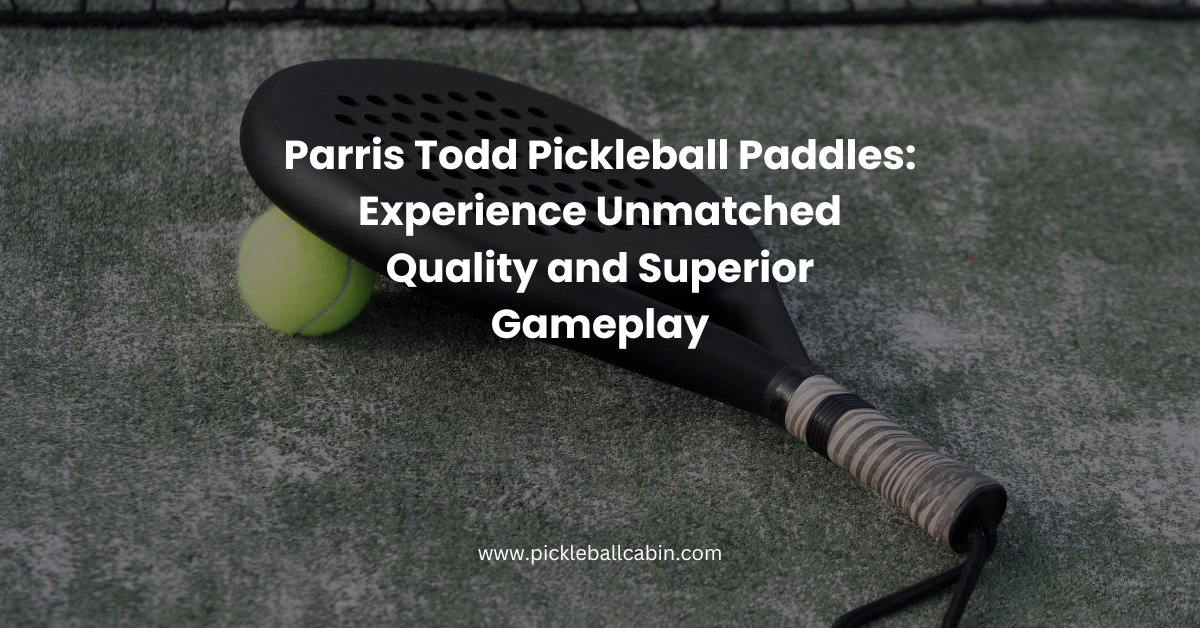If you’re new to pickleball or even an experienced player, it’s essential to understand the basic rules of the game. Pickleball is a fun and exciting sport, but without adhering to its rules, it can quickly become confusing and frustrating.
In this section, we will explore the seven fundamental rules of pickleball to help you gain a solid understanding of the game’s essential aspects. Whether you’re a beginner or an experienced player, knowing these rules can make a significant difference in your playing ability and enjoyment.
Key Takeaways:
- Understanding the seven rules of pickleball is crucial for both beginners and experienced players in enjoying and excelling in the game.
- By learning the rules, players can engage in fair competition, improve their skills, and have a great time on the court.
The Court Boundary Rule
The first rule of pickleball is playing within the court boundaries. The rectangular court is divided into two halves by a net with a non-volley zone (NVZ) and the rest of the court in each half. Players must keep the ball inside the borders and stay out of the NVZ unless the ball bounces first.
Boundaries of the court are 44 feet long and 20 feet wide for doubles play and 22 feet wide for singles play. The court is split by a 34-inch tall net that divides the court into two halves. The NVZ (or kitchen), a seven-foot area adjacent to the net on both sides, is not to be entered unless the ball first bounces there.
“It’s important to stay within the court boundaries, not only to ensure fair play but also to prevent any disruptions in the game.”
Official Pickleball Court Dimensions: Everything You Need To Know
The Non-Volley Zone Rule
The non-volley zone (NVZ) is a vital part of pickleball gameplay. As per the official rulebook, players are not allowed to hit the ball out of the air while standing inside the NVZ unless the ball bounces first. This rule helps prevent players from taking advantage of their proximity to the net and promotes longer rallies. It also adds a strategic element to the game, as players must position themselves outside the NVZ to hit volleys effectively.
The NVZ is an area on both sides of the net that extends 7 feet in each direction, marked by a line parallel to the net. It is commonly referred to as the “kitchen” due to the restricted movement allowed within its bounds. A player can enter the NVZ after hitting a groundstroke or a shot that has bounced. They must, however, exit the NVZ before hitting a volley. If the player hits the ball while standing inside the NVZ without bouncing it first, it results in a fault, and the opponent gets the point.
Players can hit the ball while standing in the non-volley zone after the ball bounces once. This rule allows players to get close to the net and hit a shot after the ball has had a chance to slow down. In summary, the NVZ rule adds an extra layer of strategy while preventing players from dominating the game from the net with fancy volleys.
The Non-Volley Zone Rule
The non-volley zone (NVZ) is the area closest to the net. While standing in the NVZ, players are not allowed to hit the ball out of the air unless the ball bounces first. This rule prevents players from smashing the ball down on their opponents and helps to promote longer rallies. Players must also keep their feet outside of the NVZ unless the ball bounces in the zone before they hit it.
Remember, if you are standing in the NVZ when you hit the ball before it bounces or your foot touches the NVZ while the ball is in play, it will result in a fault.
It is important to note that the NVZ is only applicable to shots hit out of the air. Players can still step into the zone to hit a ball that has bounced in the NVZ, and they may also reach over the net to hit a ball that has already bounced on their side of the court. However, players may not touch the net with their body or paddle at any time, as this will also result in a fault.
Mastering Pickleball Volleys: Strategies For Singles And Doubles Success
The Faults and Double Bounce Rule
One of the most important aspects of playing pickleball is following the game’s rules. The fault rule is crucial in maintaining fair play, and it occurs when a player violates any of the seven rules of pickleball. For example, if a player steps into the non-volley zone (NVZ) or hits the ball out of bounds, it is considered a fault. Violating any rule results in the opponent receiving a point.
Another essential rule is the double bounce rule. This rule states that the ball must bounce on each side, one time each, before any team can hit it out of the air. This rule helps prevent players from gaining an unfair advantage, and it ensures that both teams have a fair chance to hit the ball.
The Serving Rule
One of the most critical rules in pickleball is the serving rule. As the serving player, I must stand behind the baseline and hit the ball underhand diagonally into the opponent’s half of the court. It’s essential to make sure my serve clears the net and lands within the boundaries of the receiver’s court. Failure to meet these requirements results in a fault and an automatic point to the opponent.
It’s worth noting that in doubles, both players on my team have the opportunity to serve, and we rotate the serve after each point. The serving team continues to serve until they make a fault, after which the serve passes to the opposing team.
Finally, it’s important to remember that I cannot step on or over the baseline until after I hit the ball. Doing so results in a fault.
Understanding this rule is key to a great serve and a successful game of pickleball.
Latest Guidelines About Pickleball Serving Rules 2023
The Scoring System in Pickleball
Scoring in pickleball is relatively straightforward compared to other racket sports, such as tennis or badminton. Each time a team wins a rally, they earn a point. However, only the serving team can score points. The receiving team can only earn points by winning the serve and subsequently winning rallies.
The first team to reach 11 points (or 15 in some cases) and maintain a lead of at least 2 points wins the game. If the score is tied at 10-10 or 14-14, the game continues until one team wins by a margin of 2 points.
It’s important to note that the server always calls out the score before each serve. The server’s score is called first, followed by the receiver’s score. For example, if the server has 3 points and the receiver has 2, the server would call out “3-2.”
Keeping track of the score is crucial in pickleball, and it’s important to make sure the score is accurate throughout the game. A lost point or incorrect score could mean the difference between winning and losing the game.
By understanding the scoring system in pickleball, players can strategize and work towards achieving the required number of points to win the game.
Pickleball Scoring Rules: Mastering Game With Winning Strategies
Conclusion
As I conclude this article, it’s important to reiterate that understanding and following the 7 rules of pickleball are essential for enjoying and excelling in the game. From playing within the court boundaries to adhering to the serving rules, each of these rules promotes fair play and strategic gameplay.
By following these rules, players can cultivate their skills, enhance their competitive spirit, and have fun on the court. Whether you’re a beginner or an experienced player, mastering these rules is key to taking your pickleball game to the next level.
So, why not grab a pickleball paddle, find some friends, and put these rules to the test? With a little practice and determination, you’ll be well on your way to becoming a pickleball pro!
FAQ
Q: What are the 7 rules of pickleball?
A: The 7 rules of pickleball are the court boundary rule, the two-bounce rule, the non-volley zone rule, the faults and double bounce rule, the serving rule, and the scoring rule.
Q: What is the court boundary rule?
A: The court boundary rule states that players must play within the designated court boundaries and stay out of the non-volley zone (NVZ) unless the ball bounces first.
Q: What is the two-bounce rule in pickleball?
A: The two-bounce rule requires each team to let the ball bounce once on their side before hitting it back to their opponents, ensuring fair play and strategic positioning.
Q: What is the non-volley zone rule?
A: The non-volley zone rule prohibits players from hitting the ball out of the air while standing inside the non-volley zone (NVZ) unless the ball first bounces.
Q: What are faults and the double bounce rule?
A: Faults occur when a player violates the game’s rules, such as stepping into the NVZ or hitting the ball out of bounds. The double bounce rule requires the ball to bounce on each side once before any team can hit it out of the air.
Q: What is the serving rule in pickleball?
A: The serving rule requires the serving player to stand behind the baseline and hit the ball underhand diagonally into the opponent’s half of the court, ensuring it clears the net and lands within the receiver’s court boundaries.
Q: How is scoring done in pickleball?
A: Scoring in pickleball is based on winning rallies. The serving team can score points, and they must reach 11 points (or 15 in some cases) with a lead of at least 2 points to win the game.



